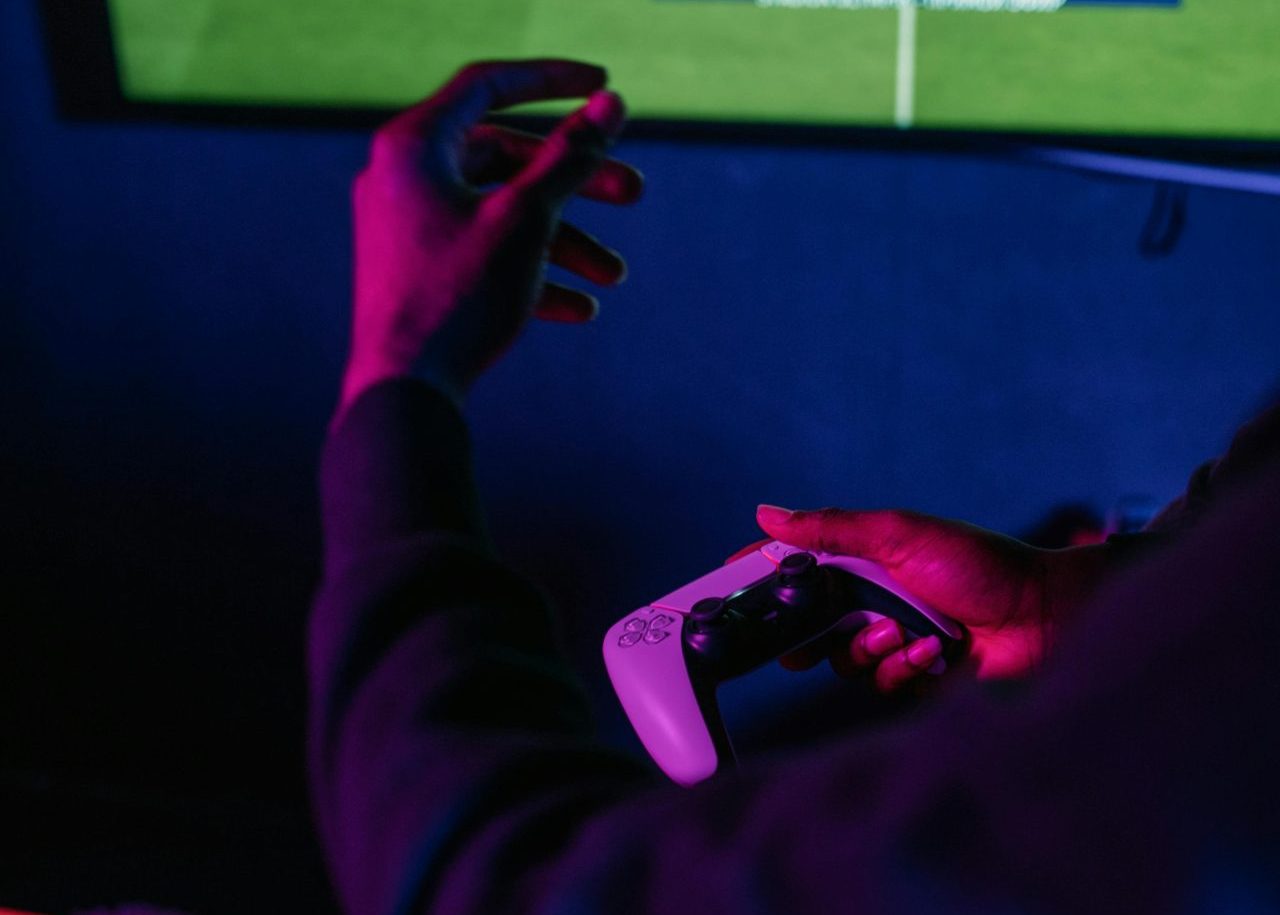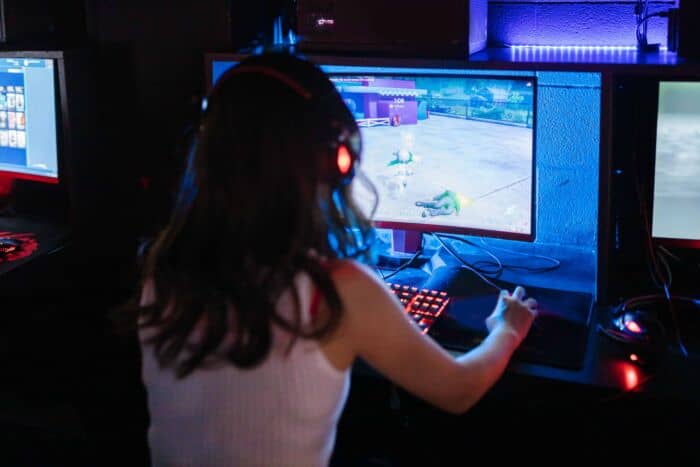June 29, 2021
A Lifestyle Rebooted: How Gaming Culture Has Evolved With Gen Z and Gen Alpha

We live in an age of reboots. A lot of our favorite things have seen newer incarnations for better or for worse. This goes for movies, TV shows, celebrities, and toys. But one thing that has snuck under your radar is how the term “gamer” has rebooted in the past 5-10 years. The old meme that gamers are isolated loners sitting in their parents’ basement is outdated and not representative of the majority of today’s gamers. Gaming has gone through a generation progression into mainstream acceptance, especially by the younger generations. With that being said, in this article, we will explore how the gamer stereotype came to be, and how it has progressed throughout the years to represent an entirely new population.
Starting At The Beginning

Let’s start with Pong, the game that brought a broad appeal to the world of gaming. While there were some earlier forms of video games that existed prior to Pong, this game certainly opened everything up to a wider audience. Pong was a game mainly found in communal places like pizza shops, bars and other casual sit down establishments as a way for folks to pass time while waiting on food or service. It was always intended to be a point of conversation between people and engender friendly competition. And while Pong was incredibly popular amongst the general public, Atari, the manufacturer, did spot the game building an incredibly strong repeat audience. This would lead Atari to make more of these public consoles to the point that arcades started popping up across the United States. It was at this point we saw the rise of the first “gamers”. These were hobbyists that enjoyed the challenge of the original arcade games, and the communities that were built up around them. The one thing to stress here is that these arcades were public spaces, and these original gamers were often going to these arcades to play with other people with shared interests in the same titles. At this point, arcades were so popular, being a gamer was hard to stigmatise and didn’t really receive any attention in the media. It wasn’t until the next major leap in gaming that the gaming stigma would come to fruition.
The Migration of Gamers From Arcade To Home
While the Atari 2600 is often credited as starting the video game home console movement, it was not the home console that gave birth to the gamer stereotype. The Atari 2600 was marketed as a family appliance and sold in much the same fashion as board games – centerd on family fun. After the video game crash of 1983, two major forces rose to prominence that would shape gaming as a passion for the next two decades. Those two forces were computer gaming with the Commodore 64 and home console gaming with Nintendo Entertainment system. While computer gaming would take a back seat to console gaming in sales and notoriety, it would build a much more hardcore fanbase that would be influential in the original gamer stereotype.
The Commodore 64 was one of the first home computers that was suitable for the general public, selling incredibly well to the tune of 17M units. With that kind of user base, game creators thought it could be a great platform to distribute games. While the first computer games were often crude graphically, they pushed the home computer to its limits. It also started to build a diehard audience with the computer enthusiast crowd. Due to the difficulty of using and maintaining these original computers, the audience for the original PC games ended up being mostly male tech enthusiasts. The tech profession and interest was generally focused on men, due to societal standards. Also, as the internet was in its infancy at the time, and no software was focused on peer-to-peer communication, these computer games focused on single-player experiences that usually isolated the user.
While the Nintendo Entertainment System can be mostly credited with saving the gaming industry after the 1983 crash, it left some indelible scars on the gaming psyche almost 30 years later. This largely stems from how Nintendo chose to market the Nintendo Entertainment System (NES) when it came to the US market in 1983. Nintendo originated in Japan as a toy company, producing regular toys and playing cards. When Nintendo entered into the video game industry, it found major success marketing games to children. In Japan, stores had not yet gendered the toy aisle so the NES was marketed to both boys and girls. That all changed when NES attempted to launch on American toy shelves. In the 80’s, toy companies had seen blockbuster sales by gendering the toy aisle. Some toys were made for boys and some for girls, but it was all sold and marketed as gender exclusive. The ads for these toys leaned heavily into both genders, often at the detriment of the other sex. Thus, when the NES looked for its place in store aisles, it was told to pick a side. Nintendo chose male, causing a pivot of all of their marketing to target one gender. This would then set in place the market trend that continued well into the 2010s.
The Juvenile Gamer Stereotype

The forces of computer and home console gaming began to mix into public consciousness, as gaming became a popular hobby. Within the public eye, video games were a children’s toy and any adult who enjoyed such games had to be somewhat juvenile. Furthermore, there was a perception that adult gamers were probably on the more anti-social bend, as gaming now happened inside and alone, rather than at public arcades. It is at this point that the gamer stereotype took shape within pop media. We started seeing character tropes such as the geekier or nerdier side characters that reflected gamers, like Screech in Saved By The Bell. Older generations claimed that gaming was making children weak and lazy, encouraging them to be inside. This argument was used against TV, radio and even written word media for many years. Socrates, the Greek philosopher himself, lamented that the written word would “create forgetfulness in the learners’ souls.” But this outrage over the past time would pale in comparison to the backlash gaming would receive in the 90’s, thanks to the game Mortal Kombat.
The Gaming and Violence Debate
In 1992, Mortal Kombat became the hit of the holiday season within the world of video games. Scaring parents and politicians alike, violence and gore had never been depicted in this much detail before. Many people worried that this would be the ultimate corrupter of youth. And while there never has been any conclusive evidence linking violent video games with violent behavior, the world started labelling gaming as a past time for the disturbed. All games really did as a medium was respond to trends seen in the 80’s and 90’s movie scene, such as Rambo, Alien, and Conan. But what faced the gaming industry was news headlines and legislation to restrict and demonize. This led to another set of judgements on gamers, already on top of what had been built in the 90’s. These tropes of gamers being violent and antisocial all came to a head in 1999 at Columbine. The two perpetrators of the Columbine shooting were avid gamers who played games like Doom and Quake. Parents of the victims even added into the anti-gaming frenzy by suing the video game companies for spurring the behavior of the gunmen.
The media’s coverage of gaming would then become self actualizing, as gamers would feel isolated from the outside world due to the construction of falsehoods by the mainstream media. The community went somewhat underground until one invention gave them the opportunity to finally connect. The spread of internet usage led to major flourishes within gaming communities. For the first time, gamers all over the world could find like minded individuals and talk about their favorite games and even play games together. No game did a better job at building an online community than that of World of Warcraft. World of Warcraft was the first game that allowed people to create lasting relationships and communities through guilds and raid parties. Some guilds are still operating today, 17 years later. Gaming was starting to become a more social event and it would only gain more momentum from there.
How The Smartphone Impacted Gaming
The next major shift in gaming did not happen in the console market or on the desktop PC. The next major movement in gaming happened in your pocket, and it has changed the world of gaming forever. The introduction of the smartphone changed the world on so many levels, but perhaps most significantly, it made gaming more approachable than ever before. While a lot of the first successful mobile phone games were social games, reminiscent of those you used to play on Facebook, they started making major money. The other distinguishing factor is the fact they did not care about gender at all. In fact a majority of mobile phone gamers are female, showcasing that there was a massive underserved market for gaming with women.
A mix of accessibility of gaming through phones and a generation of parents who grew up with video games led to a brand new generation of gamers. Gen Z and Gen Alpha are the most inclusive and diverse generations we have seen to date, and gaming has boomed as a passion point, with those age groups now sitting aside sports in some polls. With more accepting parents, and a game never being more than a phone swipe away, it’s not surprising that gaming is how a lot of the younger generations chose to socialize with friends.
Social Media And The Gaming Community

Another outside force that has galvanized the gaming community within younger demographics is the rise of social media and how such platforms can be utilized for gaming content. In the past, there were very few outlets to consume gaming media, but in the past decade the rise of sites like YouTube and Twitch have led to a golden age of creator content. Now gaming content creators and streamers are seen in the same light as celebrities, most notably Ninja’s recent meteoric rise. Gaming is seen as a passion point for the youth and the platforms that support them have become an active target for advertisers.
While gaming influencers have risen in prominence, what they look like and how they sell themselves has changed greatly. The first Twitch streamers were more often than not just really good players or pro players that attracted viewers through superior gameplay. If you were a basketball player and could watch Lebron practice daily and ask him questions, wouldn’t you? But as time moved along and top streamers started getting more money and attention, they knew they had to start differentiating themselves from their peers. At this point, gaming influencers started focusing on the entertainment value of their streams and content. This meant face cams, better lighting, better microphones, editors, chat integrations, and all the other innovations of the past 5 years. Influencers suddenly cared what they looked like and started having their own personal brand.
Once a creator had a brand, the next question was how best to monetise said brand? At this point, a lot of influencers started moving into the world of merchandise. Cheap printed T-shirts and hats with creator branding became popularized, selling online or at conventions. This opened up a whole new way for followers to support their favorite influencer and community. But as time went on, and fans knew the influencers were making significant income, the audience started expecting a higher quality of merchandise to be available. We also started to see women voicing their displeasure in the lack of female designed clothing in these marketplaces. It is here we see some of the top current gaming influencer brands emerge, thanks to their excellent work in the apparel market. Groups like 100 Thieves, a competitive esports organization and content creator collective, realized that a younger generation of gamers wanted to represent them with fashion, that would be considered cool no matter the context. They went to work combining their IP, the world of gaming, and the mechanics of limited edition streetwear to create a tremendously profitable and popular apparel line. They understood that the apparel was not only good to sell, but a status symbol for gaming that people desperately wanted, similar to the world of tennis shoes. 100 Thieves also works tirelessly on social media to paint a glamorous picture of their content creators to instilll a sense of cool and prestige in being a gamer. They are doing the work to empower a new generation of gamers to proudly identify themselves without fear of being judged by old tropes.
Rock and Roll
Gaming’s evolution of the past 30 years very closely resembles the path of rock and roll. Both were misunderstood by older generations and labeled as dangerous for the youth. Fans were often labeled as outsiders or undesirables. But time and a dedicated audience would bring both passions into the mainstream, to a point of mass acceptance in the current day. While both were separated in the time by 30 years, their similar trajectories are hard to ignore. Where gaming goes from here and how it continues to evolve is completely unknown, but one thing is certain – if you try to judge the world of gaming by old tropes and narratives, you’ll miss what is a truly wonderful medium that is capturing hearts and minds.





